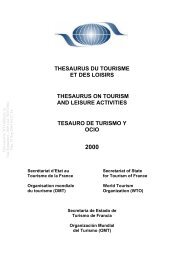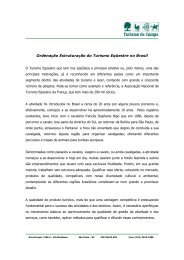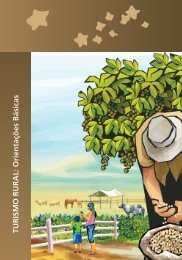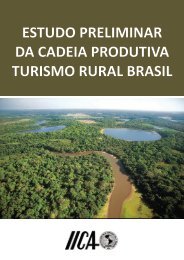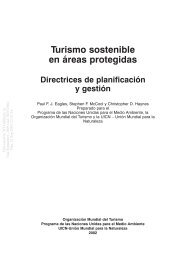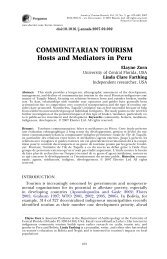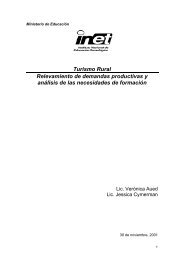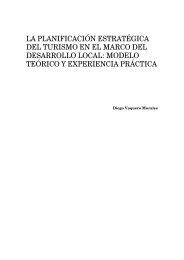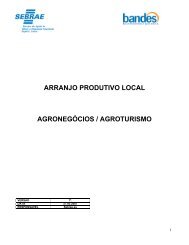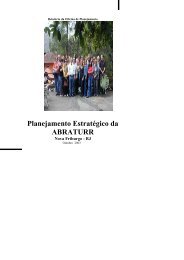TOURISM AND RURAL SETTLEMENTS Nepal's ... - ResearchGate
TOURISM AND RURAL SETTLEMENTS Nepal's ... - ResearchGate
TOURISM AND RURAL SETTLEMENTS Nepal's ... - ResearchGate
Create successful ePaper yourself
Turn your PDF publications into a flip-book with our unique Google optimized e-Paper software.
868 <strong>RURAL</strong> <strong>SETTLEMENTS</strong><br />
Table 3. Lodge Owners’ Future Infrastructure Plans a<br />
Plan ABC (n = 146) Jomsom (n = 192) Manang (N = 159)<br />
Additional beds 23.8 17.3 29.0<br />
Additional attached bathrooms 7.9 12.7 3.7<br />
Solar water heater installation 6.3 16.4 18.7<br />
Building repairs 11.1 10.9 13.1<br />
Roof-top or terrace dining 17.5 15.5 14.9<br />
Backboiler installation 1.6 8.2 5.6<br />
Electricity 11.1 4.5 0.9<br />
Oven/Electric water heater 3.2 9.1 0.9<br />
Better toilets/shower 4.8 4.5 12.1<br />
Others 12.7 0.9 1.1<br />
a Figures indicate % of responses.<br />
adding rooftop or terrace dining, better toilets and shower, and various<br />
energy-related installations (Table 3). Expansion of at least 160 beds<br />
was planned in the near future. While big lodges wished to be bigger<br />
and more sophisticated (with flush toilets and Western type loo), smaller<br />
lodges wanted to add showers and attached bathrooms, two basic<br />
but important amenities in the region. Thus, expanding infrastructure<br />
has not only altered the exterior building design and architecture, but<br />
the interiors of many new lodges look completely modern.<br />
Endogenous Processes. The changing forms, functions, and hierarchical<br />
development of tourism-induced rural settlements can be explained<br />
through the examination of historical, socioeconomic, and cultural<br />
developments within the Annapurna region. The historic migration<br />
of the highland ethnic groups from Tibet during the 13th and 14th<br />
centuries, followed by periods of migration of Tibetan refugees in<br />
the 50s who used the routes on their journey to Pokhara, where a refugee<br />
camp had been established by the Nepali government, have had<br />
influences on the spatial distribution of settlements (Hagen 1994).<br />
Remnants of other refugee camps are scattered throughout the region;<br />
these were established to handle increasing numbers of refugee crossing<br />
over to Nepal from Tibet; some camps like Tatopani eventually became<br />
popular tourism locations.<br />
Hospitality traditions in the region date back to several decades before<br />
the arrival of trekking tourism, and trans-Himalayan trading was<br />
instrumental in establishing this tradition. Trading lasted for more<br />
than two centuries, ending around the early 70s, when modern transportation<br />
and trade treaties made it less profitable (Fürer-Haimendorf<br />
1989). The Thakali were skilled traders and innkeepers who controlled<br />
a significant part of the historic salt trade along the Kali Gandaki corridor<br />
(Heide 1988). A network of bhatti (traditional inns), located strategically<br />
along major trading routes and at transhipment points such as<br />
Tukuche and Manang, served food and accommodation needs of tourists<br />
(Nepal, Kohler and Banzhaf 2002). Many early Europeans who<br />
journeyed across the region found shelter at these establishments,



